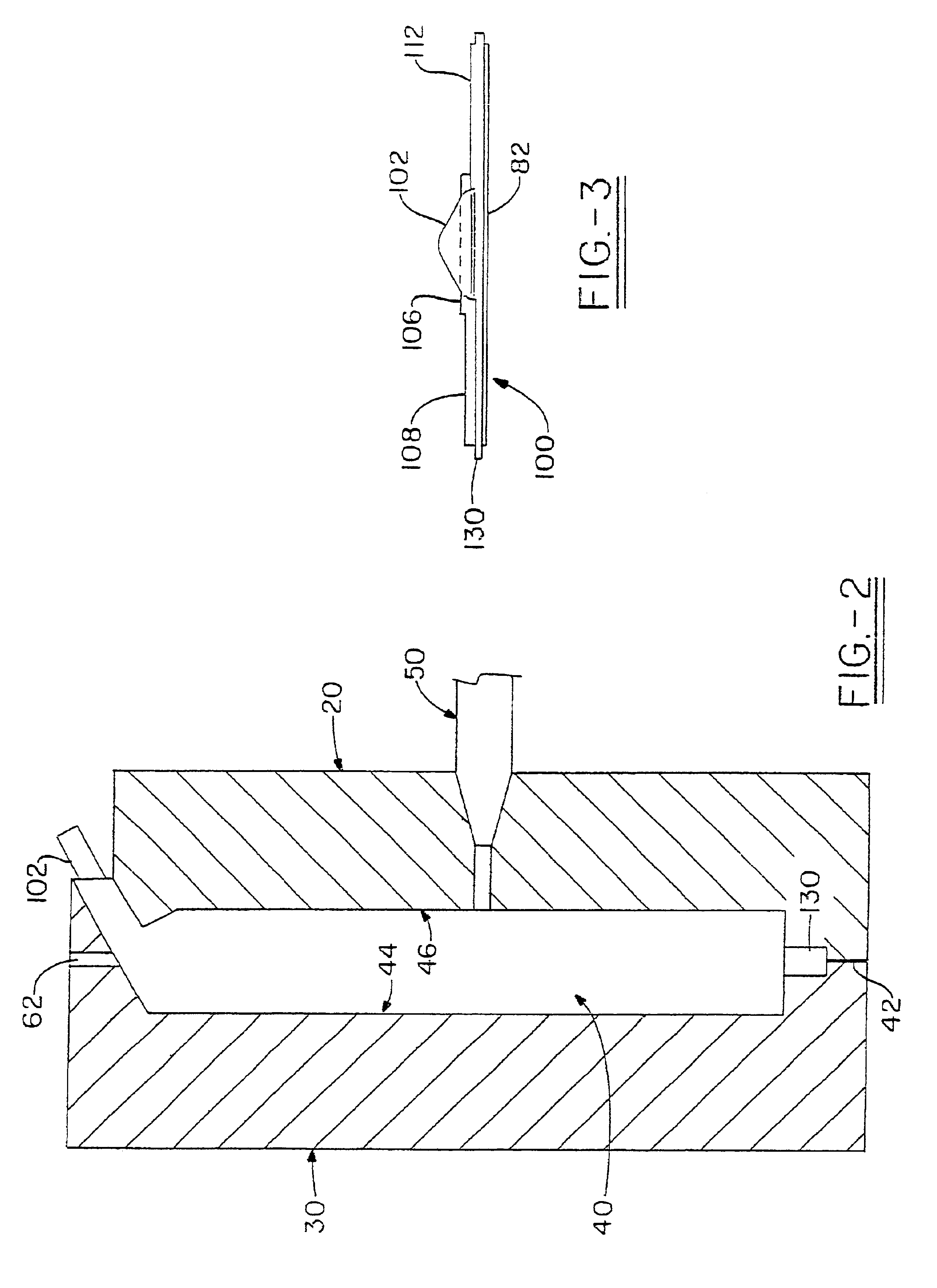In-mold appearance coatings for nylon and nylon based thermoplastic substrates
- Summary
- Abstract
- Description
- Claims
- Application Information
AI Technical Summary
Benefits of technology
Problems solved by technology
Method used
Image
Examples
example 1
In-Mold Coating Composition.
INGREDIENTPARTSWT %FUNCTIONHPMA8.923.61MonomerIBOA58.0023.46MonomerZinc Stearate4.801.94Mold ReleaseCalcium Stearate1.600.65Mold ReleaseStyrene37.0014.97MonomerHydroquinone0.180.07Inhibitor12% Cobalt Naphthenate0.260.11AcceleratorHALS*1.500.61Light StabilizerUV Absorber3.001.21Light StabilizerSilica2.100.85Filler, ThixotropeTalc10.004.05FillerPolyester Urethane Diacrylate88.0035.60Crosslinking OligomerHexane Diol Diacrylate22.008.90Crosslinking OligomerLubrizol AMPS 24043.301.34MonomerMethacrylic Acid3.601.46MonomerT-Butyl Peroxy Benzoate2.931.19InitiatorTOTAL247.19100.00*HALS is Hindered Anion Light Stabilizer
Text for Examples A Through K
Experimental panels were molded from Ticona Celstran® PA6 / 6 glass-reinforced polyamide using a Cincinnati-Milacron 500 T Injection molding machine and a 12″×20″×0.10″ flat panel tool equipped with an in-mold coating injector. The coated portion of the part was 12″×20″. Tool temperature was 220° F. The in-mold coating wa...
PUM
| Property | Measurement | Unit |
|---|---|---|
| Fraction | aaaaa | aaaaa |
| Fraction | aaaaa | aaaaa |
| Fraction | aaaaa | aaaaa |
Abstract
Description
Claims
Application Information
 Login to View More
Login to View More - R&D
- Intellectual Property
- Life Sciences
- Materials
- Tech Scout
- Unparalleled Data Quality
- Higher Quality Content
- 60% Fewer Hallucinations
Browse by: Latest US Patents, China's latest patents, Technical Efficacy Thesaurus, Application Domain, Technology Topic, Popular Technical Reports.
© 2025 PatSnap. All rights reserved.Legal|Privacy policy|Modern Slavery Act Transparency Statement|Sitemap|About US| Contact US: help@patsnap.com


